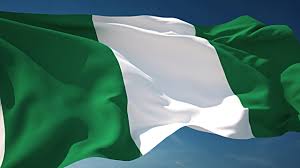#NigeriaAt58 #IndepedenceDay : See interesting facts about Nigeria’s Independence day you probably didn’t know
Nigeria is
turning 58, hurray! As part of the process of turning a year older, Nigeria
will be celebrating her independence day once again.
It is,
however, interesting to know that there are in fact a few facts about Nigeria’s
independence day that are not widely known. Owojela’s Blog, helps fill in this
gap by sharing 4 interesting facts about Nigeria’s Independence Day that are
probably unknown.
Before
Independence Day Southern Cameroon was actually Part of Nigeria It was first
called the British Cameroons during the colonial era. The British Cameroons was
a British Mandate territory in the then British West Africa. Today, the
territory forms parts of Northern Nigeria in West Africa and Cameroon in
Central Africa.
The split came
shortly before the independence of Nigeria, after the French Cameroon became
independent. Questions arose on what to do with the British part of the
territory, and after some discussions (which had been ongoing since 1959), a
plebiscite was agreed to.
The Muslim-majority of the Northern area of
Cameroon opted for union with Nigeria, while the South area voted to join
Cameroon. Before Independence Day and a Few Years after Independence Day,
Nigeria Used What Was Called the ‘Nigerian Pound’ as Their Currency of Exchange
The Nigerian Pound was the currency used by Nigeria between 1907 and 1973.
Nigeria used the British West Africa pound until 1958, after which they started
issuing their own currency. The Nigerian pound which was at parity with the
British pound for the sake of easy convertibility, was subdivided into 20
shillings, each of 12 pence. The Nigerian pound was later replaced with the
introduction of the decimal naira in 1973 at a rate of 1 pound = 2 naira.
This change
made Nigeria the last country to abandon the pre-decimal currency system of the
Europeans. Cocoa House, Which Was Once the Tallest Building in Tropical Africa,
Was Completed a Few Years After Independence Day The Cocoa House was completed
in 1965 at a height of 105 meters.
This popular
building was once the tallest building in tropical Africa and is located in the
city of Ibadan in Oyo State, Nigeria. It was built from the proceeds of
commodities such as Cocoa, Rubber, Timber and so on. It is a 26-storey building
which was commissioned for use in August 1965.
Unfortunately,
the building was gutted by fire in 1985, but was rehabilitated for use in
August 1992. The New Nigerian Currency Notes and Coins was Introduced a Year
Before Independence Day On July 1st 1959, the Central Bank of Nigeria issued
the new Nigeria currency notes and coins.
The previous
currency notes used in Nigeria from 1912 to early 1959 were issued by the West
African Currency Board. When the new Nigeria currency notes and coins were
issued, that of the West African currency board were withdrawn. By July 1st
1962, the currency of the West African Currency Board ceased to be a legal
tender.




Comments